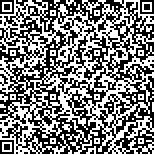| 本文已被:浏览 1712次 下载 1596次 |

码上扫一扫! |
|
|
| 应用数据挖掘技术分析古代35则消渴医案辨证论治规律探析 |
|
方朝晖1,2, 赵进东1,2, 李中南1, 忻凌1, 倪英群1, 李家云1, 谢峰涛3, 杨雪3
|
|
1.安徽中医药大学第一附属医院, 合肥 230031;2.安徽省中医药科学院, 合肥 230031;3.安徽中医药大学, 合肥 230031
|
|
| 摘要: |
| [目的] 分析古代医案中诊治消渴的辨证思维、处方、用药规律。[方法] 使用中医病历采集系统录入35则消渴医案的相关资料信息, 对病案中关键证素信息进行数据预处理与转化, 运用描述性统计方法、聚类分析及关联规则等方法分析辨证论治规律。[结果] 症状出现频次最多的依次为多饮、多食易饥、多尿、消瘦等, 中医常见证型为肺胃热盛、肾阴亏虚、肝肾阴虚等, 常见治法为清肺和胃、清胃养阴、滋补肝肾等, 常用药物为:知母、麦门冬、甘草等, 复杂网络分析图显示知母、熟地黄、生地、甘草、麦门冬为核心处方, 其中最核心药物为知母。聚类分析显示用药的组合可分成4类, 分别为:清热养阴、滋补肝肾、收敛固涩、泻下攻积。[结论] 应用数据挖掘技术能较好地总结诊治消渴症、证、法、药的临床经验。 |
| 关键词: 数据挖掘 古代医案 消渴 糖尿病 |
| DOI:10.11656/j.issn.1673-9043.2015.04.01 |
| 分类号: |
| 基金项目:国家中医药管理局中医药重点学科(20091221);国家科技部科技支撑计划(2012BA126B00);国家中医药管理局基本公共卫生服务项目(20131012);安徽省自主创新专项资金(13Z04013);安徽中医药大学科学研究基金项目(2015qn029)。 |
|
| An analysis of thirty-five ancient medical case's syndrome differentiation and treatment regularity in treating Xiaoke: based on data mining |
|
FANG Zhao-hui1,2, ZHAO Jin-dong1,2, LI Zhong-nan1, XIN Ling1, NI Ying-qun1, LI Jia-yun1, XIE Feng-tao3, YANG Xue3
|
|
1.The First Affiliated Hospital of Anhui University of Traditional Chinese Medicine, Hefei 230031, China;2.Anhui Academy of Chinese Medicine, Hefei 230031, China;3.Anhui University of Traditional Chinese Medicine, Hefei 230031, China
|
| Abstract: |
| [Objective] Analyze the ancient medical case regularity of dialectical thinking, prescription, herbs in diagnosing and treating Xiaoke. [Methods] Input thirty-five Xiaoke ancient medical case's related information and resources by traditional Chinese medical(TCM) case acquisition system, data preprocessing and transformation of key card information in ancient medical case. Using the method of descriptive statistics, cluster analysis and association rules to analyze syndrome differentiation and treatment regularity. [Results] The common symptoms of Xiaoke patients were polydipsia, hunger, diuresis, thin, and so on. The common TCM syndromes of Xiaoke were lung and stomach heat, kidney yin deficiency, liver and kidney yin deficiency, and so on. The common therapies were clearing heat lung and stomach, clearing heat stomach and nourishing yin, and nourishing the liver and kidney. The commonly used formulas were experience, Yunv Decoction and Baihu decoction, and so on. The commonly used herbs were anemarrhena rhizome, ophiopogon, licorice, and so on. The complex network analysis diagram showed that anemarrhena rhizome, radix rehmanniae preparata, radix rehmanniae recens, licorice, ophiopogon were the core herbs in the prescriptions, especially anemarrhena rhizome.The cluster analysis showed that herbs combination could be divided into 4 categories. That was clearing heat and nourishing yin, nourishing liver and kidney, astringent, purgative activity. [Conclusion] It is a good technology to summarize the clinical experience of diagnosis and treatment of Xiaoke's symptoms, syndrome, therapies, formulas, herbs by data mining. |
| Key words: data mining ancient medical case Xiaoke diabetes mellitus |
